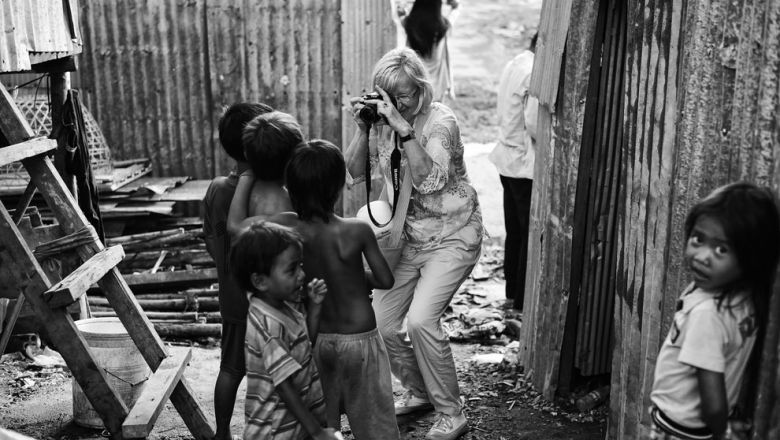In the nature of photographing without understanding, tourists tend to greedily grab imagery of impoverished landscapes without embracing the realities or repercussions of their visits. There is tendency to want to capture these “gold mines” of photography that in essence are people living in want of the normal provisions that many of us take for granted.
In my travels through different areas of the world I have witnessed numerous tourists taking part in this photo looting – their maneuvers always seem fruitless and void of artistic merit. Capturing without understanding. Devouring the landscapes and people with their lenses without grasping the realities or repercussions of their “photographic forays”. They take, but leave only disjointed impressions behind.
Toronto based photographer Nick Lachance brought this article to my attention which encapsulates some of these notions:

Dirty Tourism in Cambodia
Phnom Penh Post
Bennett Murray & Vandy Muong
March 21st, 2015
Photographers in the Kingdom don’t see eye-to-eye on who should point their lenses at human suffering
Most days, Dutch photographer Michael Klinkhamer takes clients on photography tours around Phnom Penh.
Often they stroll around the Royal Palace, sometimes they walk the gritty streets downtown.
Occasionally – and more controversially – Klinkhamer takes the amateur snappers to the old dumpsite at Stung Meanchey, where people still scavenge in the remaining rubbish six years after the city moved the dump to Choeung Ek.
“[The tourists] want to experience reality – the real life, the harsh life – because there’s beauty in it,” he said.
“If you take good pictures, there you might end up with amazing photographs. It’s romance: it’s the gypsy child with the dirty face – that makes people soft.”
This type of “dirty tourism” made headlines in the UK’s Daily Mail this week, when Spanish photographer David Rengel slammed tourists for taking photos of children at Siem Reap’s Anlong Pi dumpsite.”
